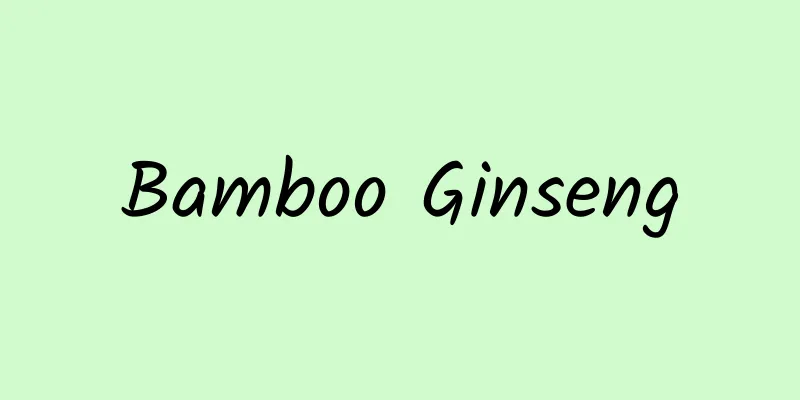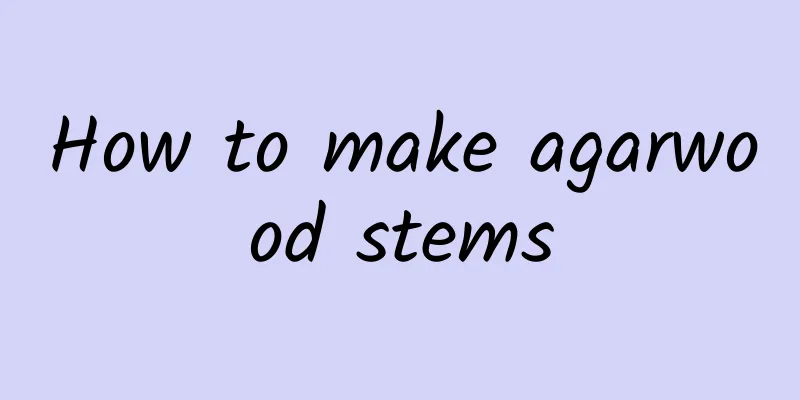Bamboo Ginseng

|
Perennial herb; the taproot is fleshy, cylindrical or fusiform, light yellow; the rhizome is very short, mostly obvious; the stem is 30-60 cm high. There are 3-6 palmate compound leaves in whorls at the top of the stem; there are 3-5 leaflets, the central one is the largest, elliptical to oblong, 8-12 cm long, 3-5 cm wide, with a long and acuminate tip, a cuneate base, decurrent, serrated edges, a few bristles scattered on the upper veins, glabrous below, and the outermost pair of lateral leaflets is smaller; the petiole is up to 2.5 cm long. The umbel is single and terminal; the flower is small, light yellow-green; the calyx has 5 teeth on the edge; there are 5 petals; there are 5 stamens; the ovary is inferior, 2 chambers; the style is 2, separated. The fruit is flat spherical and bright red when ripe. Distributed in Northeast China; mostly cultivated, rarely wild, occasionally cultivated in Hebei, and it is said that Yunnan has successfully tried to cultivate it. The fleshy root is a famous tonic for strengthening, stimulant and expectorant. The efficacy and function of bamboo ginseng1. Anti-inflammatory effect: Bamboo ginseng decoction 10g (raw drug)/kg gavage, 3 times in 1-3 days, has a significant inhibitory effect on arthritis caused by egg white, formaldehyde or dextran in rats. It also has a significant inhibitory effect on the formation of granulomas caused by cotton balls buried subcutaneously in rats. Anti-inflammatory mechanism studies have shown that bamboo ginseng has a significant inhibitory effect on formaldehyde arthritis in adrenalectomized rats. Rats gavage bamboo ginseng decoction 10g (raw drug)/kg, once a day, for 1 day or 7 consecutive days, does not reduce the content of vitamin C in the adrenal gland. Guinea pigs gavage 10g (raw drug)/kg, once a day, for 5 consecutive days, has no significant effect on the excretion of 17-hydroxycorticosteroids in urine, indicating that bamboo ginseng does not have the function of stimulating the pituitary-adrenal cortex to cause anti-inflammatory effects. 2. Anti-aging effect: When the total saponins of Panax notoginseng are 323μg/ml, they can inhibit the spontaneous lipid peroxidation in normal rat lung homogenate, and the effect is enhanced in a dose-dependent manner. 10μg/ml can inhibit the formation of lipid peroxidation in lung microsomes induced by Fe2+-cysteine, and it is enhanced in a dose-dependent manner. The total saponins of Panax notoginseng have a strong scavenging effect on superoxide anion free radicals (O-./2), and the effect is enhanced with the increase of drug concentration. It also has a strong scavenging effect on hydroxyl free radicals (·OH), which is 3.2 times that of the hydroxyl free radical scavenger sodium benzoate. Proline is hydroxylated to hydroxyproline. During the aging process of the body, due to insufficient oxygen supply, the hydroxylation process of proline is affected, resulting in a decrease in the content of hydroxyproline in collagen. The total saponins of Panax notoginseng are 0.824% (the content in crude drugs is 8%), 15ml/kg each time, once a day, for 30 consecutive days, and the hydroxyproline content in mouse skin increases by 10.4%. Bamboo ginseng polysaccharide can activate the reticuloendothelial system. 3. Hypoglycemic effect: The oleanane saponins contained in bamboo ginseng have a strong hypoglycemic effect. 4. Toxicity: When 40 g/kg of Panax japonicus (raw drug) was intragastrically administered, mice became quiet for a short period of time, their activities decreased, and their appetite slightly decreased. Medicinal value of bamboo ginsengFlavor Sweet; slightly bitter; slightly warm Meridians Enters the lung, spleen, and liver meridians Function and indications Tonifies the body, relieves cough and eliminates phlegm, disperses blood stasis and stops bleeding, reduces swelling and relieves pain. It is mainly used for weakness after illness, loss of appetite, cough due to consumptive disease, hemoptysis, hematemesis, epistaxis, blood in stool, hematuria, retrograde menstruation, metrorrhagia, traumatic bleeding, abdominal masses, blood stasis and amenorrhea, abdominal pain due to yin stasis after childbirth, traumatic injury, rheumatic joint pain, carbuncle, hemorrhoids, and snake bites. Dosage For internal use: decoct in water, 3-10g; or soak in wine; or make into pills or powders. For external use: appropriate amount, grind into powder and mix with or apply. Note: 1. "Collection of Common Folk Herbal Medicines": "Pregnant women should not take it." 2. "Chinese Materia Medica": "It is not suitable for those who are not weak or have blood stasis." Side effects of bamboo ginsengSide effects are caused by poor drug selectivity and are inherent in the drug itself. Whether it is a prescription drug or an over-the-counter drug, it should be used under the guidance of a doctor or pharmacist. If you feel uncomfortable while taking the drug, you must stop taking it in time and consult a doctor or pharmacist to avoid unnecessary damage. Taboos on the use of bamboo ginseng1. “Compilation of Common Folk Herbal Medicines”: Pregnant women should not take it. 2. "Chinese Materia Medica": It is not suitable for people with neither deficiency nor blood stasis. |
Recommend
What is Torino Football Club like? Torino Football Club reviews and website information
What is Torino Football Club? Torino Football Club...
The efficacy and function of Sophora flavescens The medicinal value of Sophora flavescens
Sophora flavescens itself is not a ginseng, but a...
The difference between oranges and tangerines
Many people say that oranges and tangerines are n...
The effect of plum blossom porridge
I wonder if you still have any impression about t...
How to make hard persimmons sweet and crispy
Every autumn, when I see the persimmons on the tr...
The efficacy and function of raw pumpkin seeds
Pumpkin is a melon dish that we often eat. Most p...
What is Reed Elsevier Group like? Reed Elsevier Group reviews and website information
What is the website of Reed Elsevier Group? Reed E...
How to make canned hawthorn
Hawthorn is a common fruit with high nutrition an...
How is the Chinese Embassy in Laos? Reviews and website information of the Chinese Embassy in Laos
What is the website of the Chinese Embassy in Laos...
The nutritional value and efficacy of green beans What are the benefits of eating green beans
French beans, also known as string beans or strin...
Wild loquat pictures What are the benefits of wild loquat
Everyone has eaten loquats, whether as ordinary f...
How is the Milan Conservatory? Reviews and website information of the Milan Conservatory
What is the website of Milan Conservatory? Milan C...
How to eat bergamot How to eat bergamot
Bergamot is a golden fruit with a unique shape th...
The benefits of round eggplants and how to cut them
Round eggplant is one of the most commonly eaten ...
The efficacy and function of Dendrobium chrysanthemum
Dendrobium chrysotoxum is a perennial epiphytic h...









